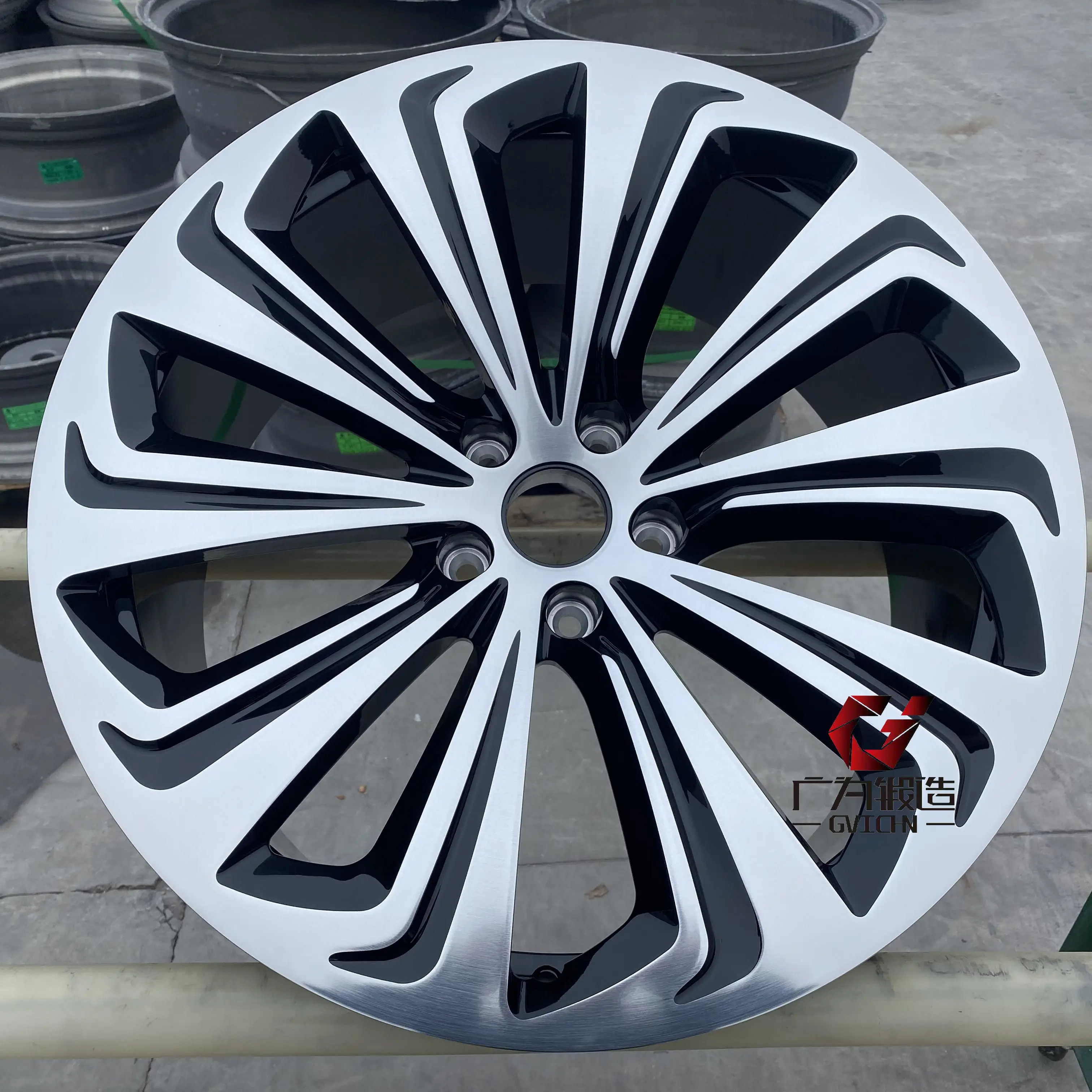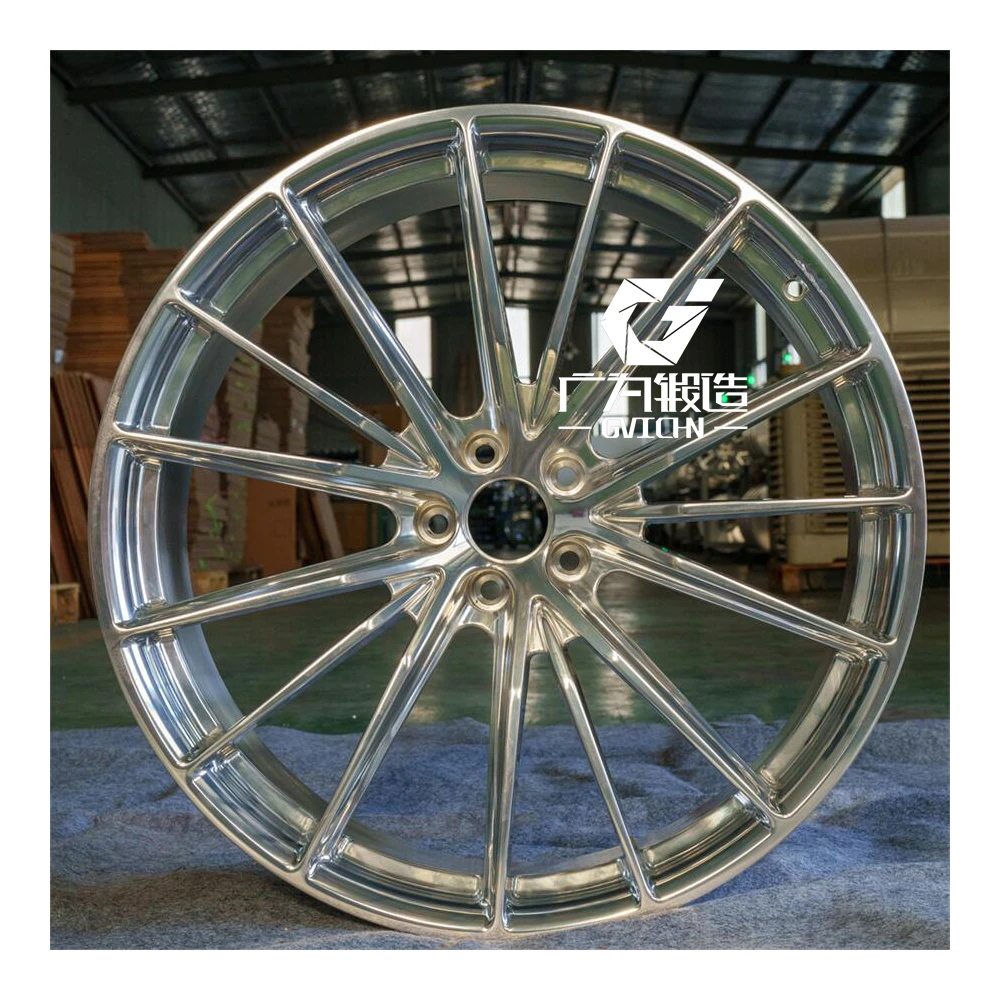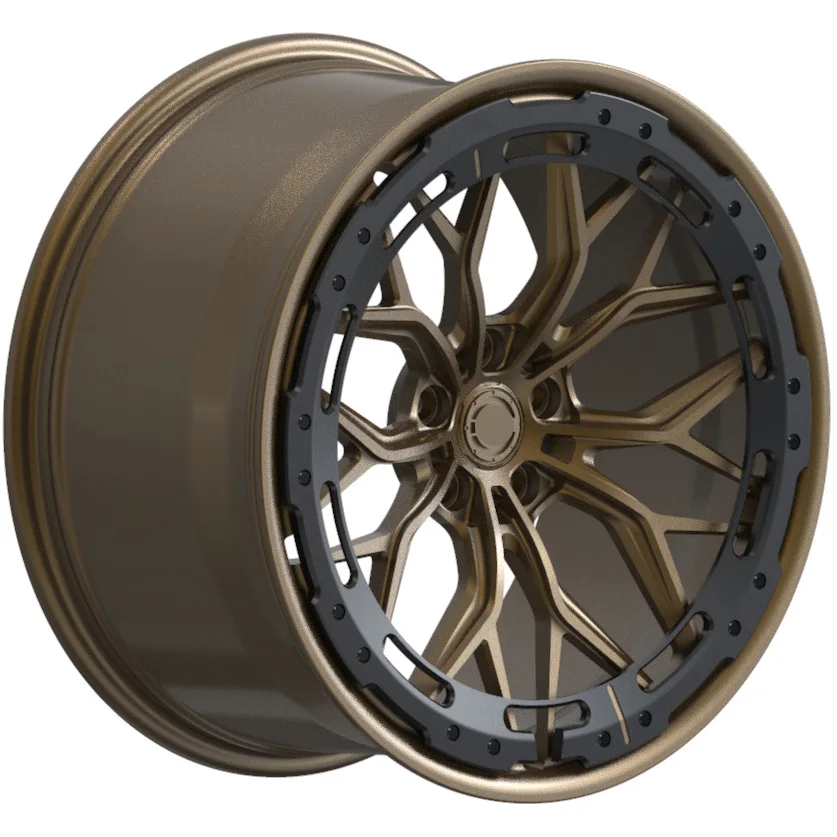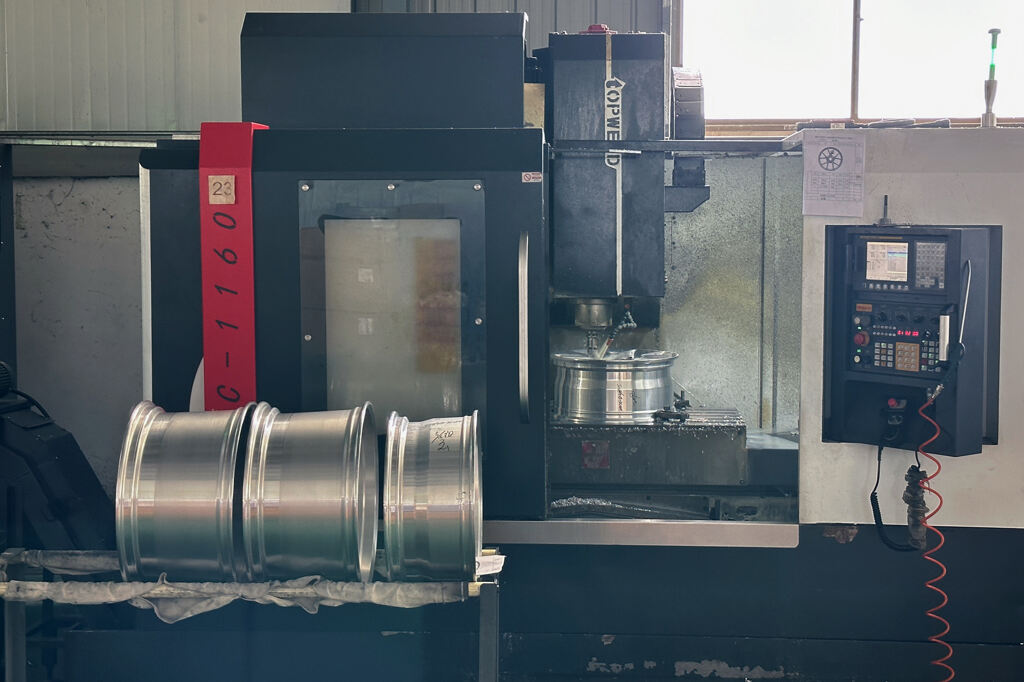Understanding Two-Piece Wheel Construction
Core Components: Barrel vs. Center Section
The two-piece wheel construction is a sophisticated design that consists of two significant parts: the barrel and the center section. The barrel forms the outer perimeter of the wheel, providing the base to mount the tire, while the center section usually includes the spokes and bore that connect to the vehicle's hub. Both components are integral to the overall performance and structure of the wheel. The barrel is often deeper in the center, aiding in maintaining the tire bead, which is crucial for stability. Material choice for these components greatly influences wheel performance; for instance, lightweight and durable alloys enhance both driving dynamics and longevity.
Material properties play a pivotal role in determining the durability and weight of each component. The barrel, typically crafted from high-strength aluminum, contributes to a balance between rigidity and weight, ensuring robust performance across challenging terrains. This is particularly advantageous for all-terrain tires or off-road tires, where durability is paramount. Customer preference often sways towards barrels that allow personalization options, such as different widths or finishes, enabling a bespoke touch to an otherwise standard wheel setup, enhancing the aesthetic as well as functional appeal.
Materials: Forged vs. Cast Aluminum Alloys
Forged and cast aluminum alloys are the two primary materials used in crafting two-piece wheels, each offering distinct advantages. Forging involves shaping the aluminum under high pressure, which refines the grain structure, resulting in a stronger, lighter, and more resilient wheel. This method is favored in extreme conditions, providing superior performance and longevity. Studies and expert opinions consistently highlight the enhanced tensile strength and impact resistance of forged wheels, making them a popular choice among performance vehicle enthusiasts.
On the other hand, cast aluminum wheels are formed by pouring molten aluminum into a mold, which allows for more intricate designs but can add weight due to the denser material structure. They are generally more affordable than their forged counterparts, making them a budget-friendly option. However, the choice between these materials often hinges on the desired balance of cost and performance outcomes. Forged alloys are ideal for those targeting high-performance metrics, while cast alloys suit applications where budget constraints are a priority.
Assembly Methods: Welded vs. Bolted Designs
The assembly of two-piece wheels can be executed through welded or bolted designs, each presenting its own set of benefits and drawbacks. Welded designs offer seamless integration between the barrel and center section, enhancing strength and reducing potential weak points but can complicate repairs since damaged parts require cutting and re-welding. Bolted designs, conversely, provide ease of disassembly, allowing more straightforward repairs and customization—a feature appealing to those with jeep rims, beadlock wheels, or those considering frequent modifications.
Studies show bolted wheels have lower failure rates in applications where reparability and adjustability are advantageous, but they may entail higher maintenance costs due to potential bolt loosening. Each assembly method can significantly influence the wheel's ability to be customized. Bolted designs inherently allow adjustments in offsets or the width of the rim—important for drivers who seek tailored handling characteristics or unique aesthetics. Thus, selecting between welded and bolted designs should align closely with the driver's priorities for strength, cost-effectiveness, and personal expression in their vehicle's appearance.
Key Advantages of Two-Piece Wheels
Enhanced Customization Options
Two-piece wheels are recognized for offering superior customization compared to their one-piece counterparts. Their design allows for a variety of aesthetic possibilities, including diverse designs, sizes, and finishes. This flexibility caters to car enthusiasts who view their vehicles as more than just modes of transportation but as expressions of individuality. Industry trends indicate a growing consumer interest in customizing wheels, particularly in niche markets such as off-road and racing. These segments demand wheels that not only perform well under extreme conditions but also complement the unique body modifications of the vehicles. Customizable two-piece wheels meet these needs, allowing enthusiasts to select specifications that enhance both the visual appeal and functional performance of their vehicles.
Weight Distribution Benefits
The design of two-piece wheels can significantly optimize weight distribution, leading to improved handling and overall vehicle performance. By allowing a more even distribution of weight, these wheels can precisely navigate through complex terrains, as evidenced in racing or off-road vehicles where handling precision is paramount. This optimized weight allocation not only contributes to enhanced handling but also influences factors such as tire longevity and fuel efficiency. Better weight distribution reduces wear on the tires, extending their lifespan, and improving the fuel efficiency by minimizing energy required for propulsion. Examples from racing and off-road case studies highlight the noticeable improvements in performance brought about by using two-piece wheels in demanding environments.
Damage Repair & Maintenance Efficiency
Among the practical advantages of two-piece wheels is their ease of repair, which surpasses traditional wheel designs. This separable design allows damaged components, such as the barrel, to be replaced individually rather than necessitating the replacement of the entire wheel. Statistics show reduced repair times and costs associated with two-piece wheels compared to one-piece wheels. Moreover, this efficiency in maintenance contributes positively to environmental conservation efforts as more parts can be reused, diminishing waste. By enabling quicker repairs and streamlined maintenance, two-piece wheels support sustainable practices and prolong the usability of wheel components, making them a wise choice for car owners invested in economic and environmental savings.
Performance Applications
Optimization for All-Terrain Tires
Two-piece wheels are specifically designed to enhance performance when paired with all-terrain tires, offering versatility that can tackle various terrains. According to expert insights, these wheels provide optimal performance metrics, such as improved traction and stability, which are crucial for vehicles navigating through rugged environments. A prime example is the Jeep Wrangler, renowned for its off-road capabilities, which benefits significantly from this optimization. The flexibility in design and structure allows two-piece wheels to be tailored to meet the demands of all-terrain use, ensuring they can withstand the challenges of both smooth highways and rocky trails with equal efficiency.
Compatibility with Off-Road Suspensions
Ensuring compatibility between wheels and off-road suspensions is vital for enhancing vehicle performance during strenuous off-road conditions. Two-piece wheels are designed with this compatibility in mind, boosting suspension performance and delivering a more comfortable ride in challenging terrains. These wheels are crafted to accommodate the unique demands of off-road suspensions, contributing to improved handling and durability. Vehicles such as the Ford Bronco benefit from such design attributes, effectively leveraging this compatibility to offer superior off-road experiences, characterized by robust suspension support and enhanced maneuverability.
Beadlock Wheel Integration Strategies
Beadlock wheels, crucial for off-road enthusiasts, are designed to prevent tire slippage during extreme conditions like mud or rocky terrains. The two-piece wheels' design accommodates beadlock integration seamlessly, offering significant advantages in off-road strategies. This design not only improves grip but also ensures the tires remain securely fastened to the wheel under low pressure, enhancing control and safety. Technical details reveal that beadlock wheels, utilized in vehicles like the Jeep Gladiator, allow for reduced tire slippage, providing the necessary grip for navigating challenging environments and maintaining traction where traditional setups might fail.
Design Considerations
Backspacing & Offset Adjustments
Backspacing and offset adjustments are vital for optimizing overall vehicle performance, especially when it comes to two-piece wheels. These metrics define how the wheel positions within the wheel well and influences handling, stability, and aesthetics. Two-piece wheels offer precise customization, allowing enthusiasts to tailor backspacing and offset for their specific setup. The flexible nature of these wheels supports diverse applications, whether for daily driving or bespoke performance enhancements. When selecting backspacing and offset, consider the vehicle type and purpose; for instance, off-road vehicles may benefit from larger offsets to handle rugged terrains effectively, while sports cars may require reduced backspacing for enhanced handling.
6-Spoke vs. Multi-Spoke Configurations
When selecting a wheel configuration, comparing 6-spoke versus multi-spoke designs highlights both aesthetic and performance considerations. The 6-spoke configuration is favored for its minimalistic look and structural strength, often providing enhanced support under high-stress conditions. Conversely, multi-spoke wheels, such as those with 10 or more spokes, offer intricate designs that cater to aesthetic preferences, although they may sacrifice some rigidity. Consumer studies often reveal a preference for 6-spoke designs due to their balance between performance and appearance. Practical applications show that 6-spoke designs excel in competitive environments, while multi-spoke options are ideal for show cars and luxury vehicles seeking stylistic appeal.
Heat Management in High-Stress Scenarios
Heat management plays a critical role in wheel performance and longevity, particularly under off-road conditions where stress levels are significant. The buildup of heat during rigorous activities can affect the wheel's material integrity, causing premature wear. Two-piece wheel designs provide solutions to enhance heat dissipation, often incorporating ventilation systems or heat-resistant coatings. This improves the wheel's ability to withstand thermal stress, ultimately extending its lifespan and ensuring consistent performance. Expert insights indicate that effective heat management mitigates risks associated with material fatigue and boosts reliability, making two-piece wheels particularly suitable for demanding off-road environments where durability is paramount.
For those interested in exploring options for durable and customizable wheels, Hautom offers a variety of two-piece forged wheels [here](#) that cater to different aesthetic and performance needs.
Comparative Analysis
Two-Piece vs. One-Piece Wheel Durability
When evaluating the durability of two-piece and one-piece wheels, significant differences emerge under various driving conditions. Two-piece wheels, made from two joined components, often exhibit enhanced versatility and customization, making them suitable for high-performance and off-road vehicles. According to expert reviews, two-piece designs offer better repairability in case of damage, as individual components can be replaced. Conversely, one-piece wheels, forged or cast as a single unit, deliver superior inherent strength due to their simplified structure, reducing potential weak points. Industry testing suggests that while one-piece wheels typically excel in load-bearing situations, two-piece wheels provide excellent adaptability, enabling precise fitment and style variations. Thus, consumers seeking robust wheels for demanding conditions often prefer one-piece designs, valuing their durability and simplicity over custom aesthetics.
Cost Comparison with Three-Piece Systems
The cost of wheel systems—be they two-piece, three-piece, or one-piece—varies widely, influenced by construction complexity and material choice. Two-piece wheels sit between one-piece and three-piece in terms of pricing, offering a balance of customization and cost. While more affordable than the highly adaptable three-piece wheels, which involve significant manufacturing intricacy, two-piece wheels deliver ample flexibility and aesthetic options at a moderate price. A market survey reveals that consumers often perceive two-piece wheels as delivering substantial long-term value; they provide ease of maintenance due to replaceable components and potential weight benefits leading to performance enhancements. Although initial costs may be higher than one-piece wheels, the added long-term benefits of customization and repairability often justify the investment for enthusiasts prioritizing style and performance over mere cost.
Jeep Rim Modification Case Studies
Case studies of Jeep rim modifications using two-piece wheels showcase significant enhancements in both aesthetics and functionality. Enthusiasts frequently choose these wheels for their Jeeps to achieve a custom look without compromising performance on rugged terrains. Real-world scenarios demonstrate that two-piece wheels allow for improved balance and handling due to their customizable attributes, important for off-road adventures where resilience and traction are key. Insights from Jeep experts highlight that two-piece wheels enable modifications that support larger tire fits and specialized terrains, delivering both an aggressive stance and enhanced control. These case studies underscore the adaptability of two-piece wheels in meeting the demands of both daily driving and extreme off-road conditions, making them an appealing choice for Jeep aficionados looking to personalize their vehicle with functional upgrades.







 Hot News
Hot News
 ONLINE
ONLINE